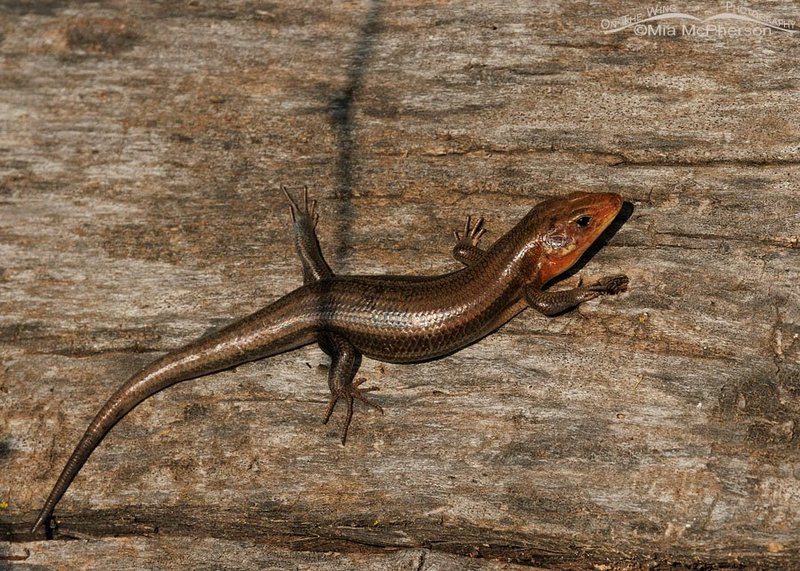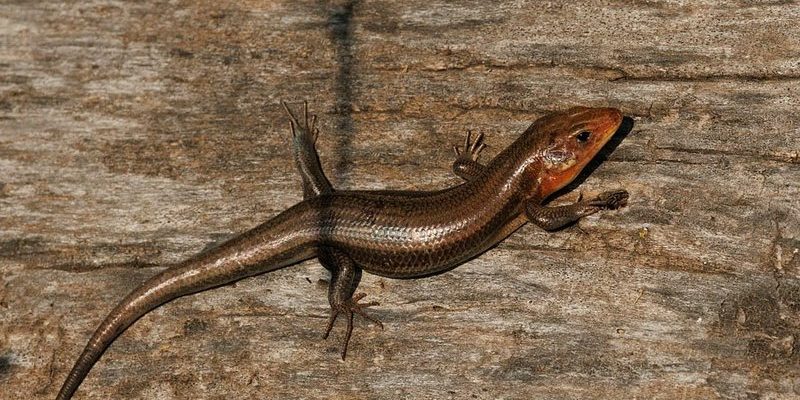
Here’s the thing about skinks: they come in various shapes, sizes, and colors, making them a bit tricky to pinpoint at a glance. But don’t worry! I’ll guide you through the steps to identify these charming reptiles in the wild. By the end of this article, you’ll feel confident spotting a skink and might even impress your friends with your newfound knowledge.
What Exactly Is a Skink?
Skinks belong to the family Scincidae, which is one of the largest lizard families in the world. You might be wondering, what sets them apart from other lizards? Well, skinks typically have smooth, shiny scales and elongated bodies, giving them a streamlined look that helps them slip through grass and underbrush. They usually have small or even absent limbs, which can add to their somewhat snake-like appearance.
There are roughly 1,500 species of skinks, ranging from the common garden skink to the more exotic species found in tropical regions. Depending on where you live, you might come across different types of skinks. Each one has unique features, colors, and behaviors, making it exciting to spot them in their natural habitats. For instance, some skinks have bright blue tails, while others display striking patterns that help them blend into their surroundings, offering excellent camouflage.
So, if you find yourself wandering through a wild area, keep your eyes peeled. These little guys can be found in various environments, from deserts to rainforests, and they play essential roles in their ecosystems as insectivores.
Physical Characteristics to Look For
Identifying a skink can start with a few distinct physical features. First up, look closely at their size. Skinks generally range from just a few inches to about a foot long—not towering lizards, by any means! You might spot one that’s barely the length of your hand or one that’s longer than your forearm.
Next, take note of their coloration. Many skinks exhibit vibrant shades of green, brown, or even blue. Some are solid in color, while others have stripes or spots. For example, the eastern skink sports a lovely blue tail that stands out against its darker body. This color contrast isn’t just for show; it can also serve to confuse predators, giving these little reptiles a chance to escape.
Another standout feature is their scale texture. Unlike many lizards that have a rugged appearance, skinks have smooth, shiny scales that reflect sunlight. This smoothness allows them to slip quickly through grass and leaf litter, making them elusive. By focusing on these details, you can start to identify skinks in your area with confidence.
Behavioral Traits of Skinks
Understanding a skink’s behavior can also help you identify them in the wild. These lizards are generally shy and prefer to retreat rather than confront potential threats. If you happen to approach one too closely, it might quickly dart away into the underbrush—often in a straight line, which is quite different from the erratic movements of other reptiles.
Skinks are also known for their basking habits. They love to soak up the sun, often found splayed out on warm rocks or sunny patches of soil. This behavior not only helps them absorb heat but also aids in digestion. If you spot a small, shiny lizard lying flat on a surface, chances are it’s a skink catching some rays!
Additionally, keep an eye on their hiding spots. Skinks often seek shelter under rocks, logs, or leaf litter, where they can remain hidden from predators. If you’re ever curious about spotting one, look a little closer in these spots. A sudden movement might be a skink darting away!
Common Skink Species to Know
Familiarizing yourself with common skink species in your area can be a great way to boost your identification skills. Let’s highlight a few notable ones:
- Common Garden Skink: Often found in gardens and grassy areas, they have a sleek body and can be recognized by their shiny brown or green coloration.
- Five-lined Skink: This skink has distinct lines running down its back, usually blue in younger individuals before turning brown as they age.
- Eastern Skink: Famous for its striking blue tail, this skink can be found basking on sunny rocks or exploring leaf litter.
By knowing a few key species, you’ll be better equipped to identify skinks when you see them. Pay attention to their specific features, and soon enough, you’ll find yourself recognizing different skinks without even thinking!
Where to Look for Skinks
When it comes to spotting skinks in the wild, knowing where to look is half the battle. These little creatures tend to prefer warm areas, so keep that in mind as you explore. Here are a few ideal locations to hunt for skinks:
- Gardens and Yards: Skinks love the warm, sunny spots often found in gardens. A few rocks or logs can make for perfect hiding places!
- Parks: Many parks have grassy areas and trees where skinks feel at home. Look near paths or around flower beds for these quick critters.
- Wooded Areas: Forests are excellent habitats for skinks. They might be hiding under leaves or logs, so keep your eyes peeled!
As you explore these areas, take your time and be patient. Skinks may be fast, but with a little effort, you might spot one basking in the sun or scurrying about. Remember, walking quietly and looking closely are your best tools in the hunt!
Conservation and Respecting Skinks
As you embark on your skink-spotting adventures, it’s essential to remember the importance of conservation. Skinks play vital roles in their ecosystems, helping control insect populations and acting as prey for larger animals. Unfortunately, some species face threats due to habitat loss and climate change.
When encountering skinks, remember to observe but not disturb them. Avoid trying to catch or handle these delicate creatures. Instead, enjoy watching them in their natural habitat from a distance. You can appreciate their beauty and understand their value in the ecosystem without intruding on their lives.
Additionally, consider getting involved in local conservation efforts. Many organizations focus on preserving native wildlife and habitats, which benefits skinks and other species. Keeping our ecosystems healthy ensures that future generations can enjoy the same wonder you’re experiencing today.
Identifying a skink in the wild is a rewarding experience that connects you to nature in a unique way. By remembering the key traits—like their shiny scales, distinctive behaviors, and preferred habitats—you’ll become a skilled skink spotter in no time. Take your time to explore different environments, and don’t forget to respect these little lizards and the ecosystems they inhabit.
So, next time you head outdoors, keep your eyes peeled for one of these fascinating creatures. Who knows, you might just spot a skink basking in the sun or slinking through the grass. Happy skink spotting!

